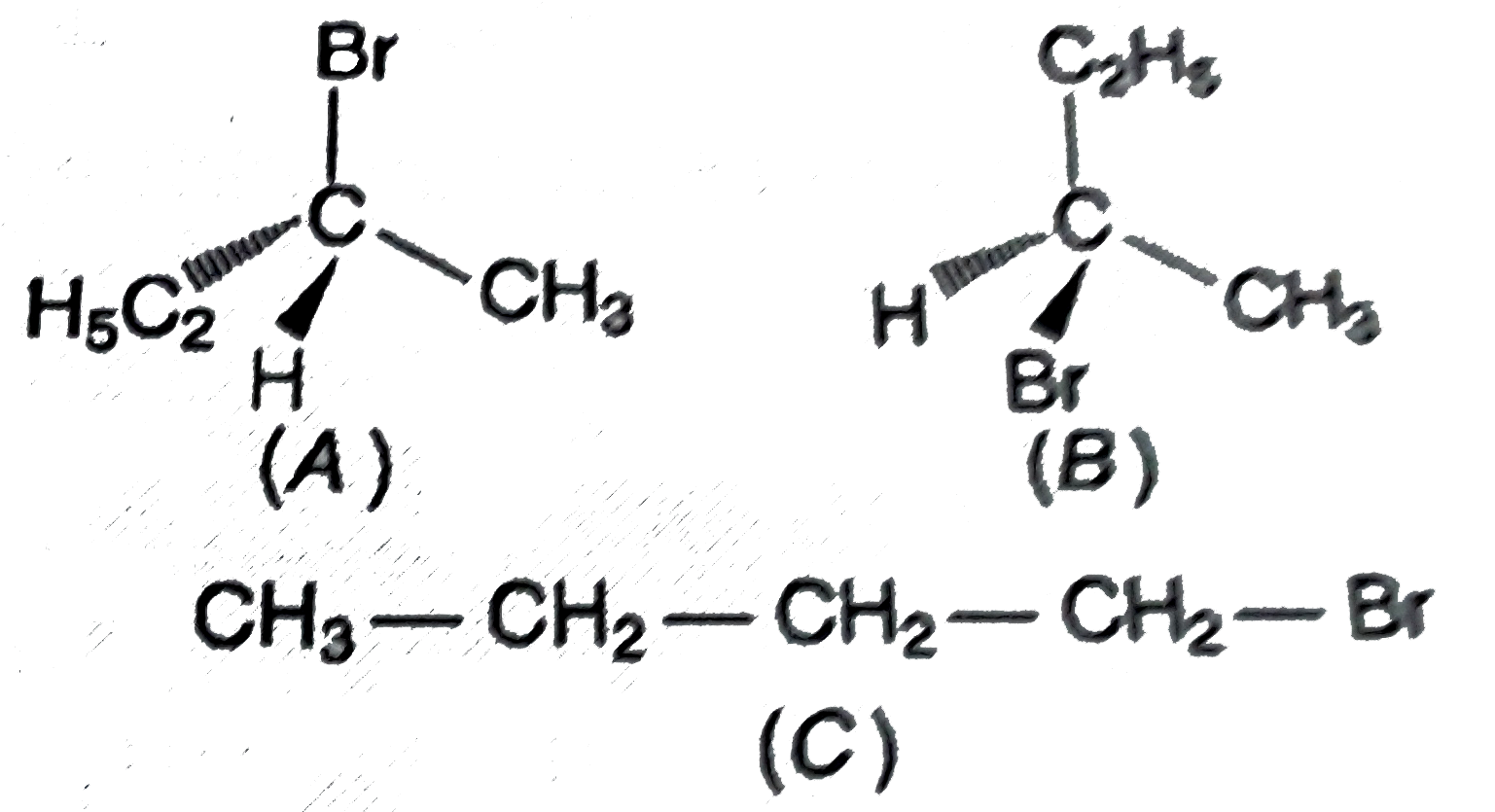The addition of Br2 to ( E)-but-2-ene gives
(R,R)-2-3-dibromobutane
(S,R)-2-3-dibromobutane
(R,S)-2-3-dibromobutane
A mixture of (R,R) and (S,S) 2,3 dibromobutane
The correct Answer is:C
To solve the problem of the addition of Br2 to (E)-but-2-ene, we will follow these steps:
Step 1: Identify the structure of (E)-but-2-ene
(E)-but-2-ene has the following structure:
CH3−C=C−CH3
In the (E) configuration, the two methyl groups (CH₃) are on opposite sides of the double bond.
Step 2: Understand the addition reaction
When Br2 is added to an alkene, it undergoes an electrophilic addition reaction. The double bond acts as a nucleophile and attacks a bromine molecule, leading to the formation of a cyclic bromonium ion intermediate.
Step 3: Draw the bromonium ion intermediate
Upon the addition of Br2, the double bond attacks one of the bromine atoms, forming a cyclic bromonium ion. The bromonium ion has a three-membered ring structure where one bromine atom is positively charged and is bonded to both carbons of the former double bond.
Step 4: Nucleophilic attack by bromide ion
The bromide ion (Br⁻), which is generated from the dissociation of Br2, can now attack the more substituted carbon of the bromonium ion. This attack occurs from the opposite side of the bromonium ion due to steric hindrance, leading to anti-addition.
Step 5: Determine the products
The product of this reaction will be 2,3-dibromobutane. Since (E)-but-2-ene is symmetrical, the addition of bromine will yield two stereoisomers:
1. (2R,3S)-2,3-dibromobutane
2. (2S,3R)-2,3-dibromobutane
However, these two stereoisomers are actually meso compounds because they are superimposable on their mirror images.
Step 6: Conclusion
The final product of the addition of Br2 to (E)-but-2-ene is meso-2,3-dibromobutane, which can be represented as:
meso-2,3-dibromobutane
Final Answer
The addition of Br2 to (E)-but-2-ene gives meso-2,3-dibromobutane.
---
(E)-but-2-ene has the following structure:
CH3−C=C−CH3
In the (E) configuration, the two methyl groups (CH₃) are on opposite sides of the double bond.
When Br2 is added to an alkene, it undergoes an electrophilic addition reaction. The double bond acts as a nucleophile and attacks a bromine molecule, leading to the formation of a cyclic bromonium ion intermediate.
Upon the addition of Br2, the double bond attacks one of the bromine atoms, forming a cyclic bromonium ion. The bromonium ion has a three-membered ring structure where one bromine atom is positively charged and is bonded to both carbons of the former double bond.
The bromide ion (Br⁻), which is generated from the dissociation of Br2, can now attack the more substituted carbon of the bromonium ion. This attack occurs from the opposite side of the bromonium ion due to steric hindrance, leading to anti-addition.
The product of this reaction will be 2,3-dibromobutane. Since (E)-but-2-ene is symmetrical, the addition of bromine will yield two stereoisomers:
1. (2R,3S)-2,3-dibromobutane
2. (2S,3R)-2,3-dibromobutane
The final product of the addition of Br2 to (E)-but-2-ene is meso-2,3-dibromobutane, which can be represented as:
meso-2,3-dibromobutane
The addition of Br2 to (E)-but-2-ene gives meso-2,3-dibromobutane.
Similar Questions
Knowledge Check
Which compound is a possible product from addition of Br2 to 1-butene?
A B
B C
C D
D
Addition of Br2 to trans-2-butene would give a product which is
AachiralBracemicCmesoDoptically activeAddition of Br2 to cis-2-butene would give a product which is:
AachiralBracemicCmesoDoptically active
The addition of Br2 to trans-2-butene produces
View SolutionState True or false
The addition of Br2 to NaI turns the solution violet.
View SolutionA) Addition of HBr on 2-butene gives two isomeric products.
R) Addition of HBr on 2-butene follows Markownikoff's rule.
View SolutionIn the following questions , a statement of assertion (A) is followed by a statement of reason (R).
A: Addition of Br2/H2O to propene given 1-Bromo propan-2-ol as the major products,
R: Addition of Br2/H2O to an alkene is an example of electrophilic addition
View SolutionWhen addition of Br2 was carried out in presence of aq. NaCl on ethene than total number of possible products is:
View Solution

